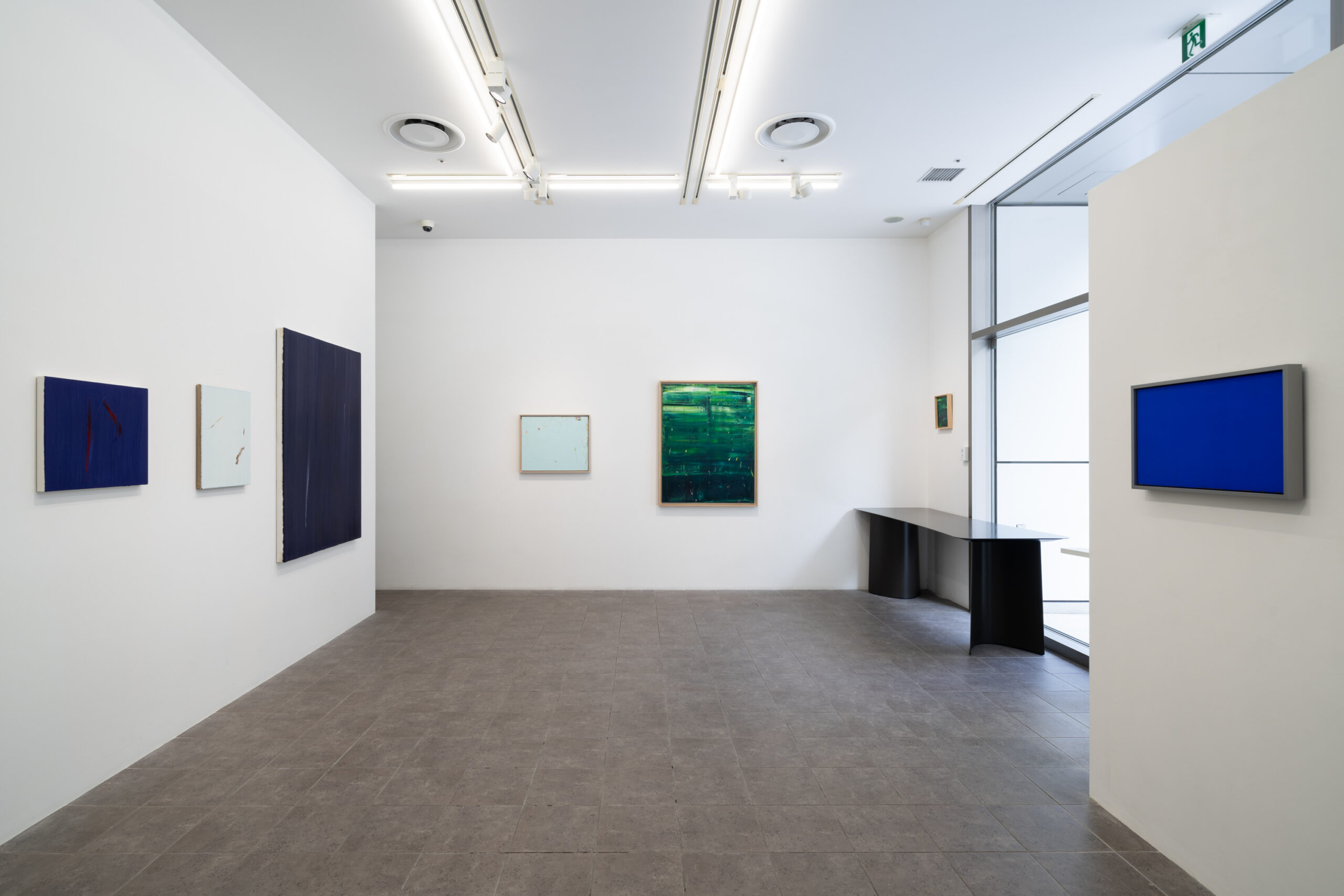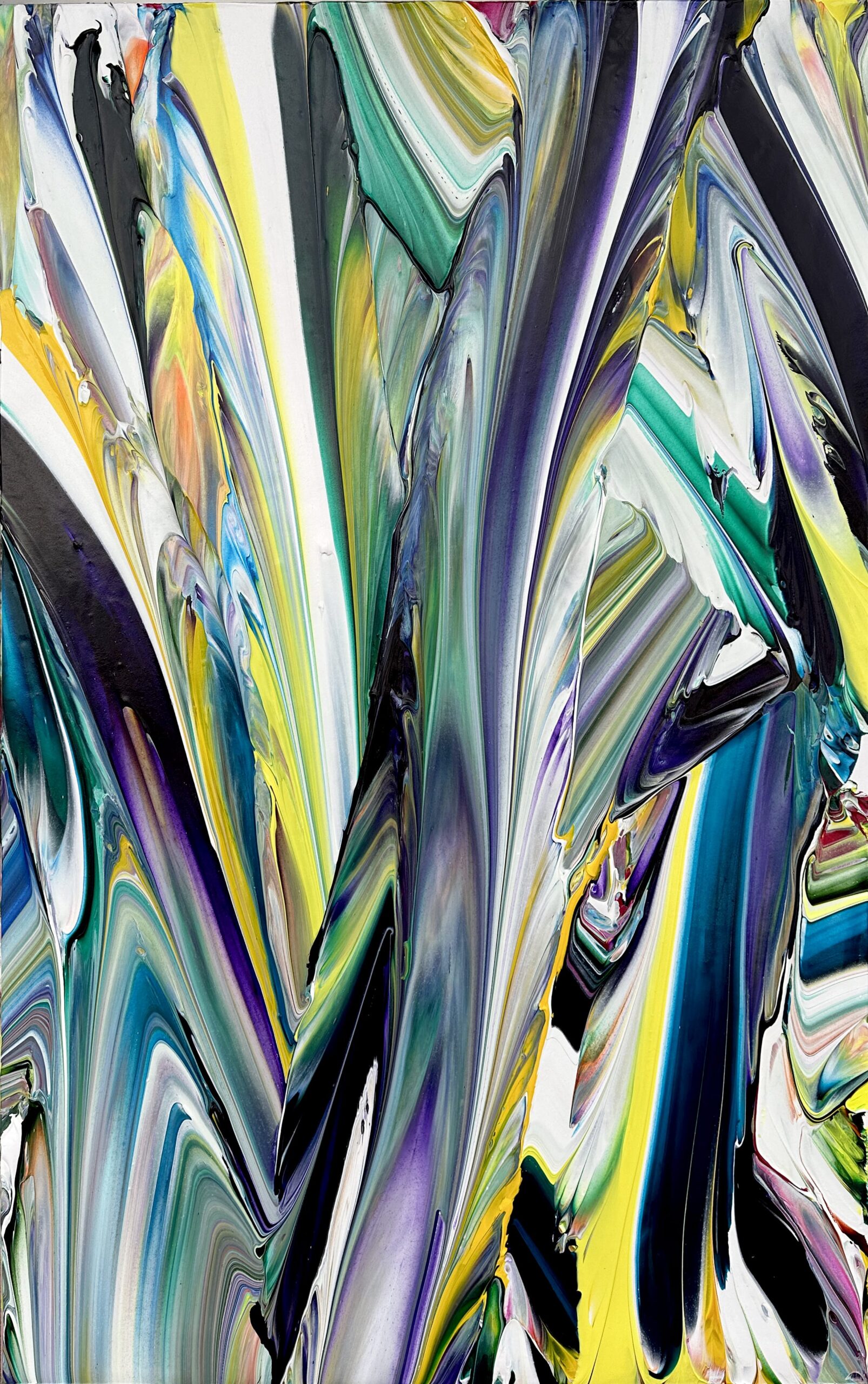
2024.05.18 - 2024.-06.08
OGAWA Yoshio, KADOTA Mitsumasa, KUBO Hiroko, SHINAGAWA Haruna, SUIZU Tatsuhiro, YOSHIKAWA Tamihito
MARUEIDO JAPAN is pleased to announce that we will hold a group exhibition of 6 artists entitled, "Examination of Blue and Green".
What colors are blue and green in Japanese, and how have they been used? In the Kojiki (earliest historical record of Japan, compiled in 712) there are only the names of four colors: red, black, white and blue. Blue, which was pronounced as "awo" is one of the oldest color names in Japanese, but it is said to have been a word that referred to all colors with low saturation, and not just blue. (From the writings of Akihiro Satake.)
Later, the Chinese character 青 (aoi) was imported from China, and from the Heian period it spread as a word to express colors with hue. Today, this same character is used as a general color to represent the color of clear skies as well as the ocean. In comparison, the Japanese word "Midori" represents the green of green shoots, and this has been unchanged up to modern times (by which time it had acquired the Japanese character of 緑). But the hue of Japanese blue includes the hue of green, and as examples traffic light signals and Green Tree Frogs are described as being "aoi" (blue) in Japanese.
This is not to say that the image of blue and green in Japanese have the exact same color impression. Moreover, Japanese people are very much familiar with indigo amidst the range of blue colors. It was Robert William Atkinson, a British chemist who came to Japan in 1875, who called the color of indigo in Japan "Japanese blue" and praised it.
It is said that there are ethnic and social differences in cultures that are related to colors, and there are differences in the range of colors expressed in words and the number and the types of color names needed. (From the writings of Kunio Fukuda.)
In this exhibition, you will not find a physical analysis of color (wavelengths), rather this is an exhibition that examines cultural backgrounds such as color associations and the symbols of colors for "blue" and "green".
Ogawa Yoshio thickly coats the surface of his canvases with oil paint and applies a single trajectory to it with a single flourish of a painting knife. He creates "something" on the canvas which is not a word and which just suddenly appears within a deep space. This one stroke is reminiscent of tension with the blank spaces of calligraphy. This exhibition focuses on his past works (from 2009 to 2019).
Kadota Mitsumasa's "Ethos" draws out the life energy of blue and green by blending and harmonizing a variety of non-blue and non-green paints. Colors that are side by side give the impression that they are forever changing due to variations in the environment.
Kubo Hiroko makes sculptures using everyday materials based on her research into theories on prehistoric art, folk arts, and cultural anthropology. Her "Blue Conical Earthenware Series" Doki, which decorates alcoves, is made from a blue sheet material used at construction sites, etc. Doki is rich in originality, and it makes you imagine new values which have sanctity.
The "Sea Trace" by Suizu Tatsuhiro was painted using azurite, a rock paint, and at first glance it looks like layers of just one single color, but it depicts the view of the blue sea just before dawn seen in Itsukushima, Hiroshima Prefecture, where he has his roots. By mixing paint with seawater collected from a specific area, he is attempting to show natural features and a relationship with nature in his art.
Shinagawa Haruna uses acrylic paint and a peelable polyethylene cloth to create a unique three dimensional look by peeling off part of the colored surface from the canvas. By bringing out the strength of the texture of the material, the energy of color is emitted as an overlay.
Yoshikawa Tamihito's "Sound of Rain" is an abstract expression of a fragrant green color with a premonition of a season where it often rains in Japan, which is a humid country. His artwork "Sora" (Sky) is a vivid reminder of the color of a sky with a wet atmosphere following rainy weather, like the phrase "Pale blue sky peeking through the clouds after the rain" (said by an emperor of China in the mid-10th century. The meaning is a command to bring the blue of the sky between the clouds once the rain has passed).
We hope you can take advantage of this opportunity to experience "blue" and "green" as handled by artists of different generations and backgrounds during this season of light cool breezes.
